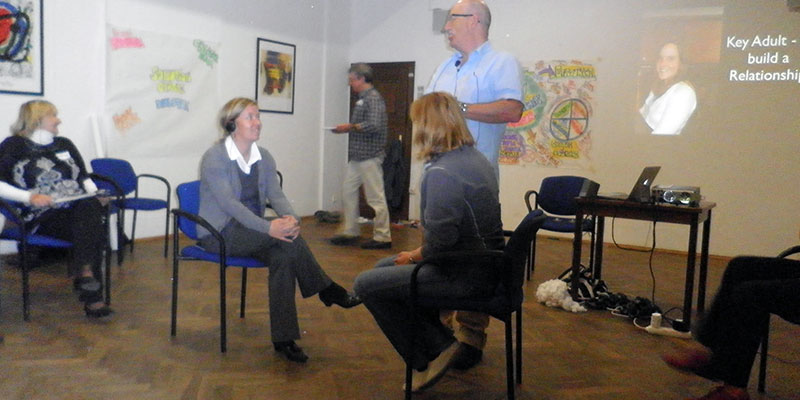
Open Space Technology
Open Space Technology (OST) was created in the mid-1980s by organisational consultant Harrison Owen. An Open Space Event can be scheduled to last for a half a day, a whole day or even 2 to 3 days. All that is needed to bring people together is a theme or title for the event. Within a LA, a theme/title might be ‘Increasing Inclusion’, ‘Raising Achievement for All’ or whatever large issue is currently confronting the organisation.
Course Category
Teaching and Learning
Description
Open Space Technology (OST) was created in the mid-1980s by organisational consultant Harrison Owen. An Open Space Event can be scheduled to last for a half a day, a whole day or even 2 to 3 days. All that is needed to bring people together is a theme or title for the event. Within a LA, a theme/title might be ‘Increasing Inclusion’, ‘Raising Achievement for All’ or whatever large issue is currently confronting the organisation. OST events have no keynote speakers, no pre-announced schedules of workshops, no panel discussions. Instead, sitting in a large circle, participants learn in the first hour how to create their own agenda.
To initiate a workshop within OST, participants propose topics relating to the theme for the event by writing them on large sheets of paper which they post on a wall marked off with pre-established times and places for small-group meetings. When participants have posted their topics, a “village marketplace” begins: participants mill around the wall, choosing their personal schedules for the remainder of the event. Group meetings start immediately. There are no leaders; those who proposed topics act as recorders whose informal minutes form a basis for the report and recommendations, which sum up the work of the group. OST is more highly organised than the best planning committee could possibly manage. It is also chaotic, productive, and fun. No one is in control; rather, a handful of simple OST principles guide group activity. The most basic principle is that everyone who comes to an OST event must be interested in the topic that draws the group together and willing to take responsibility for contributing to the group activity of creating something out of that interest.
- – All of the most important ideas, discussions, data, recommendations, conclusions, questions for further analysis, and plans for immediate action will be documented in a comprehensive report: finished, printed, and in the participants’ hands when they leave.
- This report can be made available to an entire organisation or community within days, thus immediately informing non-participating stakeholders of the groups’ findings and inviting them to join in the work of implementation.
Testimonials
Be the first…
Learning Objectives
How to create an event that recognises…
- Whoever chooses a small group is right for that group
- Whatever happens is the only thing that could happen
- Whenever it starts is the right time
- Whenever it’s over, it’s over
Who Is It For ?
- School based Practitioners
- Heads and Deputies
- SENCOs
- Learning Support
- Advanced Skills Teachers
- Primary and secondary teachers
- Parents and carers
- Local Authority Support Services
Course Content
The course will answer to following questions;
- How can we create an event that is inclusive to all
- What is open space technology
- How can we create an event that is interesting, engaging and fun
The course will cover:
- The principles of open space technology
- How to create an event with open space technology
- How to create the agenda
- How to facilitate the event
If you liked this course you may well like:
Trackback from your site.